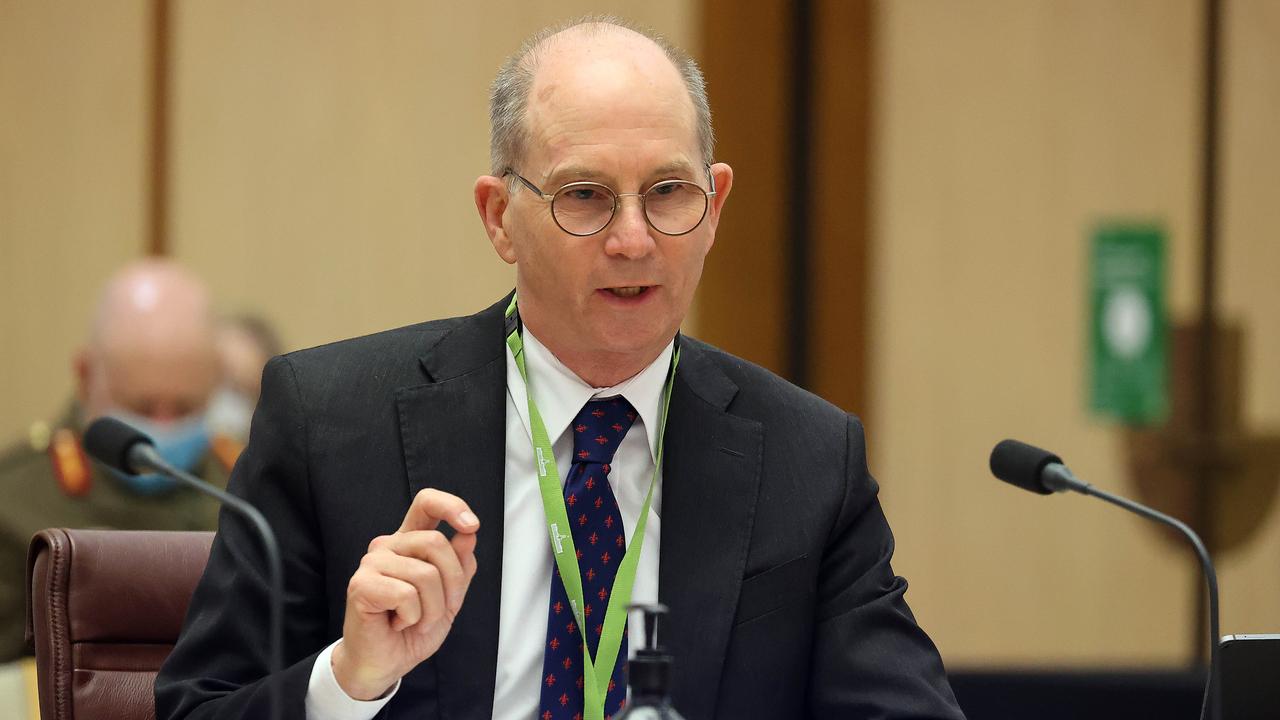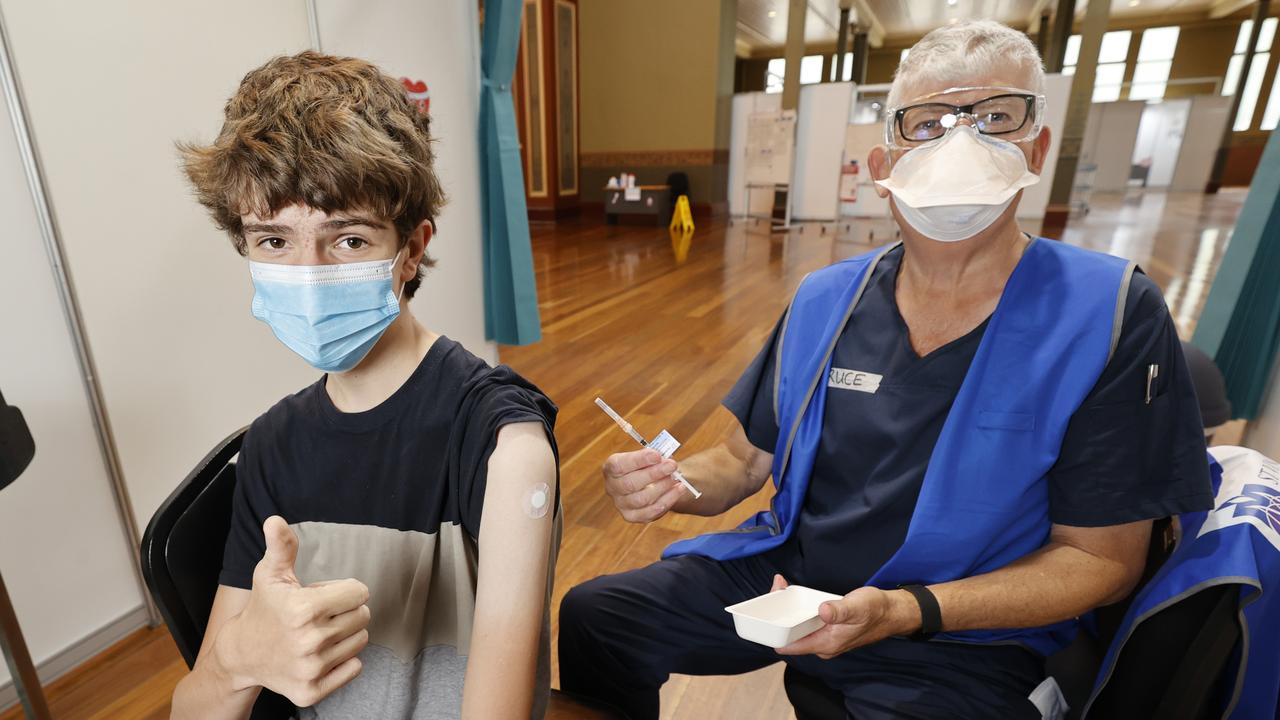Roadmap for return of elective surgeries revealed
Health Minister Martin Foley has laid out the first steps for a return to elective surgeries. Foley also announced a major funding boost for ambulance and health services.
Victoria
Don't miss out on the headlines from Victoria. Followed categories will be added to My News.
This coronavirus article is unlocked and free to read in the interest of community health and safety. Tap here to see the latest great value offer for full digital access to trusted news from the Herald Sun and Leader.
Health Minister Martin Foley has laid out the first steps for a return to elective surgeries.
He will consider a staged process of resuming surgeries depending on case numbers and hospitalisation figures.
From Monday, private hospitals and day procedure centres will be able to resume day surgery at up to 50 per cent of their regular capacity.
Mr Foley will further consider when to resume more elective surgeries, flagging this could begin as 50 per cent of health service capacity in Melbourne and 75 per cent in regional Victoria.
When the average number of covid hospitalisations drops below 600, the health Minister will weight up resuming some non-urgent elective surgeries in public hospitals.
This will depend on staffing levels at the time.
Victoria will boost ambulance and health services with a $1.4 billion funding package to cover additional costs and deliver more frontline workers.
The rollout of an extra 120 paramedics will be fast-tracked in a bid to ease the immense pressure which has led to multiple Code Red declarations.
Ambulance Victoria recorded its busiest quarter on record in the three months to December 2021.
There were 91,397 Code 1 cases, a 16.2 per cent rise on the same period in 2020.
Emergency departments treated 460,963 people over the same.time, an increase of nearly 13,000 year on year.
The number of Victorians waiting for elective surgery sits at 81,000 people.
Public hospitals will receive a share of $938 million to cover extra Covid costs, provide surge payments and support staff.
The states PPE stockpile will receive an extra 40 million N95 masks, 30 million surgical masks, 10 million gowns and 10 million face shields.
Another $196 million will go towards helping people infected with Covid recover at home.
A statewide “virtual triage” system will be rolled out to avoid unnecessary trips to hospital after a successful trial at Northern Hospital.
During the pilot, 87 per cent of people assessed online did not need to go to hospital.
Another $8 million will fund eight more GP respiratory clinics and five new urgent care centres.
Victoria recorded 11,240 new cases and 36 Covid deaths overnight.
707 people are currently under hospital care, including 79 in intensive care, 29 of whom are on ventilators.
Omicron deaths to be investigated
Deaths attributed to Covid during the Omicron wave will come under the microscope of a taskforce being established within the federal health department.
Australia’s chief medical officer Paul Kelly announced the special unit on Thursday, saying more detail was needed about deaths in nursing homes and the community.
But federal Labor leader Anthony Albanese blasted the move and demanded Aged Care Services Minister Richard Colbeck resign, accusing him of not looking after the interests of older Australians.
Authorities have come under scrutiny for being unable to explain whether people who died were vaccinated, or had a chronic illness.
New figures obtained by the Herald Sun show almost 90 per cent of the 321 Covid-related deaths in Victoria last month were people aged over 70.
In December, about 80 per cent of the 189 deaths recorded were people aged 70 and older.
Prof Kelly expressed his condolences to every family that had lost a loved one during the pandemic.

“There have been many deaths in aged care and … we are looking to try and get more details about those deaths,” he said.
“We will be setting up a specific task force in the department to look at that and do everything we can to get more detail about the issues.”
States provide a minimal amount of data such as age and sex when people die.
But Prof Kelly said details about where people lived, whether they had a chronic disease or had been vaccinated were “not being provided” by all jurisdictions.
Health Minister Greg Hunt said recent data showed 61 per cent of people who passed away with Covid were in palliative care.
Mr Hunt said 19 per cent were unvaccinated, while 8 per cent were partially vaccinated.
But Mr Albanese said the taskforce was an “extraordinary” response.
“They are going to ask a few people in the department to look at the data,” he said. “They are not going to act.”
Mr Albanese also called on Prime Minister Scott Morrison to sack Mr Colbeck, after the minister rejected claims the aged-care sector – which is struggling under workforce and rapid antigen test shortages – was in crisis.
TEENS’ THIRD DOSES BEGIN AS CASES RISE
Health authorities have recorded an uptick in the proportion of positive rapid antigen tests coming from people aged under 20, as hundreds of Victorian schools battle Covid outbreaks.
The state’s Covid-19 commanderJeroen Weimar on Thursday said the spike in cases from a younger cohort was likely caused by the return to the classroom.
“(There is) presumably a significant linkage into our school-aged population,” he said. “We expect to see these numbers bounce around over the next couple of weeks as the schools settle down.”
It comes as Victorian state-run clinics began vaccinating eligible 16 and 17 year olds with their third dose on Thursday. The dose will be the adult Pfizer vaccine given three months after their second dose, as recommended by the Australian Technical Advisory Group on Immunisation.
There are 114,000 Victorians in the 16-17 age cohort who are due for their third jab, with a further 32,000 to become eligible in the coming weeks and months. “Wherever you want to get it done, please just get it done in the days and weeks ahead,” Mr Weimar said.

VAXXED DEFINITION COULD CHANGE
The definition of fully vaccinated is set to undergo an overhaul with new advice about whether booster shots should be included expected as early as next week.
Australia’s chief medical officer, Professor Paul Kelly, has also revealed people who have received a booster may instead be deemed “up to date”.
The nation’s expert immunisation panel has been deliberating about whether the definition of fully vaccinated would require three Covid jabs going forward.
But Prof Kelly said some people who were immunocompromised actually required four vaccinations – giving the concept of up to date legs.
“That’s the terminology we use with other immunisations,” he said. “There will be a decision about what ‘up to date’ means, and then there will be a grace period to allow people to become up to date.”
Premier Daniel Andrews has spent the past week warning that he expects three doses would be required, signalling this may be applied to Victoria’s vaccine passports.
Health Minister Greg Hunt on Thursday reiterated that the Commonwealth did not have a mandatory vaccination policy.
Mr Hunt said if the definition changed, he would expect states and territories would follow the advice.
The update could also have implications for international travellers arriving at Australia’s border.
Originally published as Roadmap for return of elective surgeries revealed








